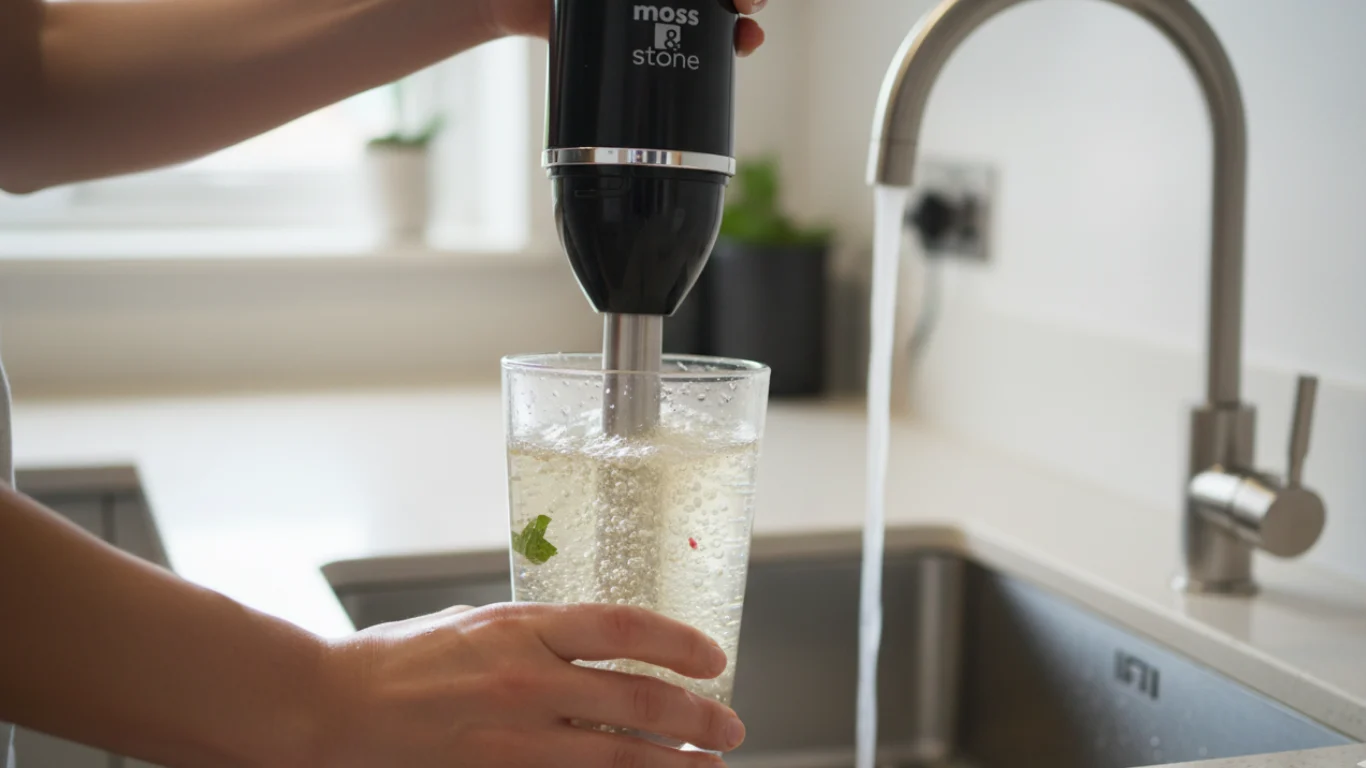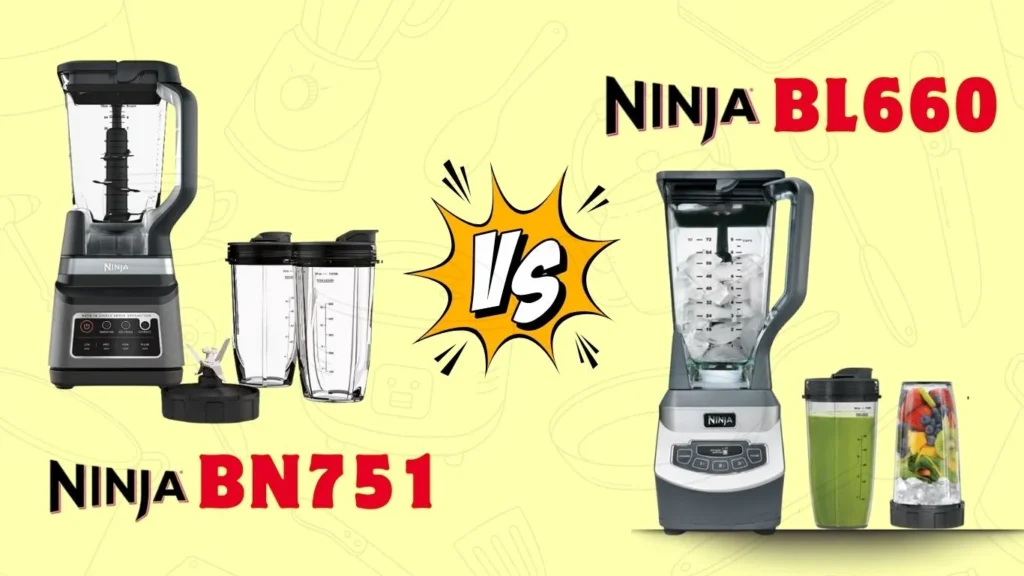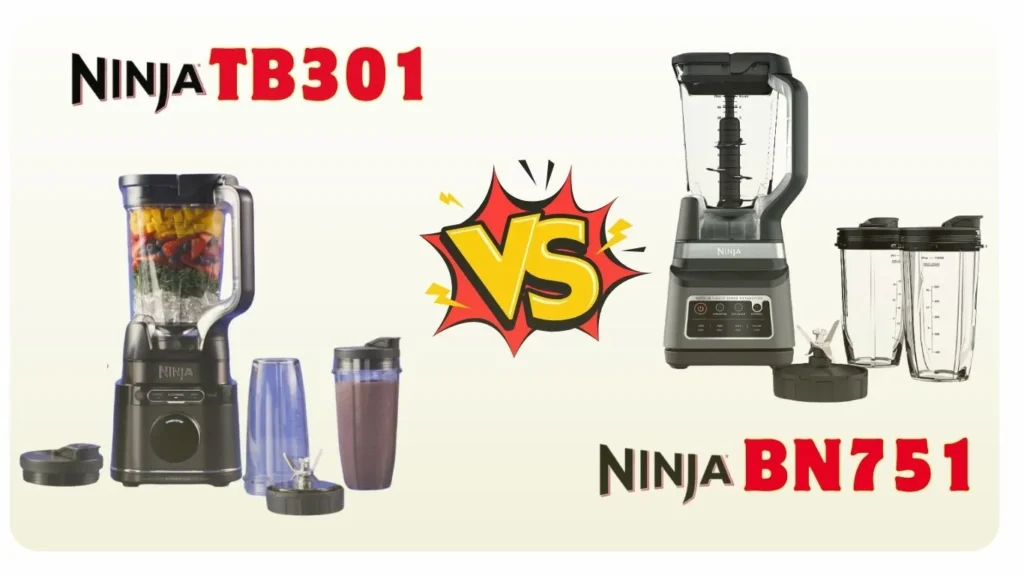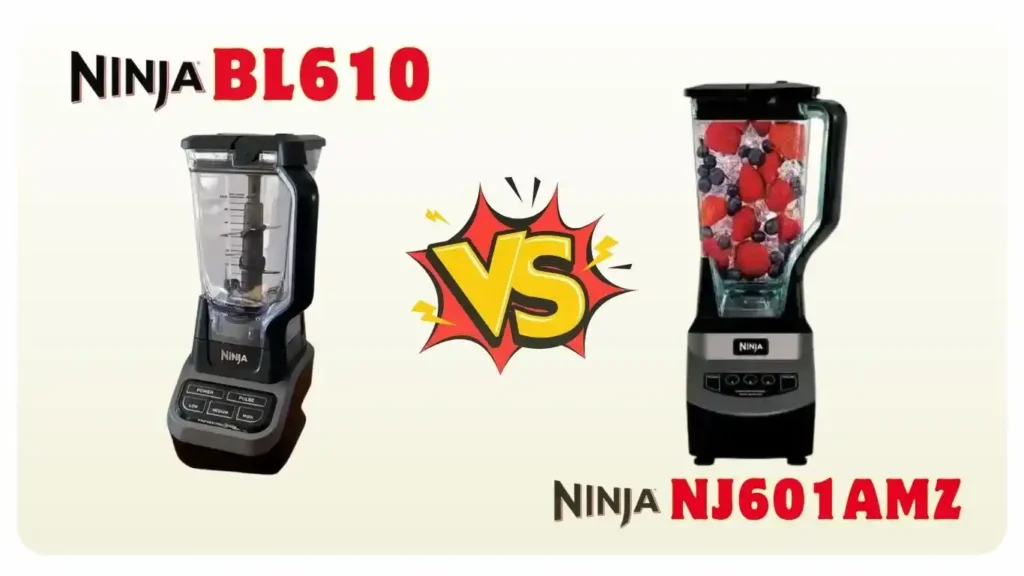You love how your immersion blender makes cooking faster and easier. But when it comes to cleaning it, you might find yourself wondering how to do it quickly and safely without damaging the blades or motor.
If you want your blender to stay in top shape and ready for your next meal, knowing the right cleaning steps is key. In this guide, you’ll discover simple, effective ways to clean your immersion blender—whether you need a quick rinse or a deeper clean.
Keep reading to learn how to keep your favorite kitchen tool spotless and working like new every time.
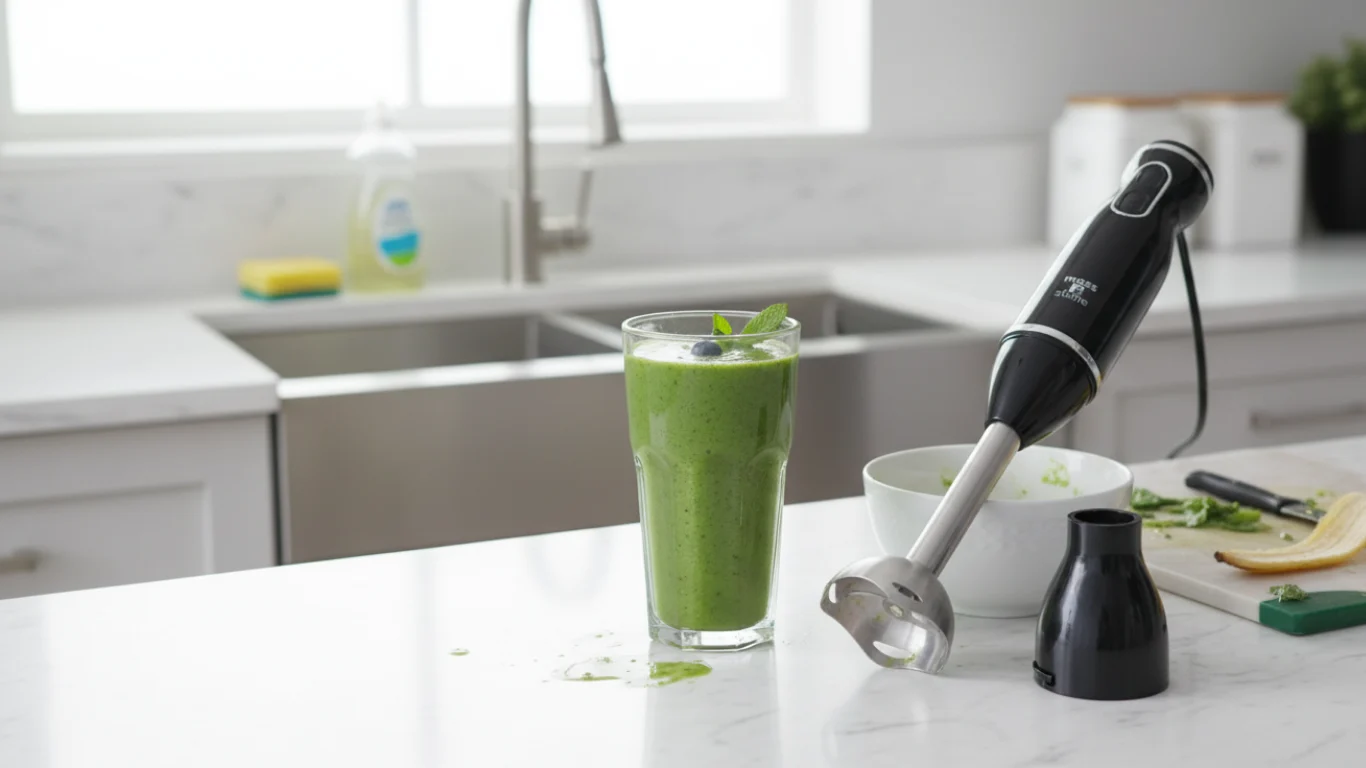
Step 1: Prepare a Simple Cleaning Solution for Your Immersion Blender
Preparing the cleaning solution is the first step to clean your immersion blender effectively. A simple mixture of warm water and dish soap can loosen food particles and grease. This solution helps make the cleaning process quick and thorough.
Use a tall container or glass that fits the blender head comfortably. Filling it about three-quarters full allows enough room for blending the solution without splashing.
Choose Warm Water
Warm water helps dissolve oils and food residues better than cold water. It also activates the dish soap for stronger cleaning power. Avoid using hot water to prevent damage to the blender parts.
Use Mild Dish Soap
Add just a drop or two of mild dish soap to the water. Using too much soap can create excess suds that are hard to rinse off. Mild soap is gentle on the blender’s blade and housing.
Mix the Solution Gently
Stir the water and soap gently to combine them well. This ensures the soap is evenly distributed before you use the blender to clean. Avoid shaking vigorously to prevent bubbles.
Step 2: Use Soapy Water to Clean Immersion Blender Blades Quickly
Blending soapy water is a simple, effective way to clean your immersion blender’s blades. This method removes food particles stuck on the blade quickly. It also helps avoid damage to the blender by preventing direct scrubbing. You only need a few seconds to freshen the blades before rinsing.
Prepare A Cleaning Solution
Fill a tall container with warm water. Add a drop or two of dish soap. Stir gently to create bubbles. Make sure the container is deep enough to cover the blades.
Blend The Soapy Water
Insert the immersion blender into the container. Turn it on for about 20 seconds. Move the blender slightly up and down while blending. This action cleans the blades and the shaft well.
Remove the blender from the soapy water. Fill the container with clean water. Blend again for a few seconds to rinse off soap. Lift the blender out and shake off excess water.
Step 3: Rinse Your Immersion Blender Thoroughly for Best Results
Rinsing your immersion blender thoroughly is key to keeping it clean and safe to use. After blending in soapy water, removing all soap and food particles is essential. This step prevents residue buildup and ensures your blender stays fresh and ready for the next use.
Submerge The Blender In Clean Water
Fill a container with fresh, clean water. Submerge the blender attachment completely. This helps wash away loose food and soap from the blades and shaft.
Run The Blender To Rinse
Turn on the blender for a few seconds while it is in the clean water. The spinning blades will shake off leftover debris and soap. This method cleans hard-to-reach spots efficiently.
Repeat Rinsing If Needed
If water looks cloudy or has bubbles, repeat rinsing. Use fresh water each time. Continue until water runs clear and no soap remains on the blender.
Dry The Blender Carefully
After rinsing, remove the blender from water. Shake off excess water gently. Wipe the shaft and blades with a clean cloth or paper towel. Let it air dry completely before storing.
Step 4: Dry and Store Your Immersion Blender Correctly
Drying and storing your immersion blender correctly keeps it safe and ready for use. Experts at Good Housekeeping recommend proper drying to prevent water damage, rust, and mold growth. So, storing the blender properly protects its blades and motor from harm.
Dry The Blender Thoroughly
After cleaning, shake off extra water from the blender. Use a clean, dry cloth to wipe the blade and shaft. Let the blender air dry completely before storing. Avoid storing it while still wet to stop rust and bacteria.
Store In A Safe Place
Keep the blender in a dry, cool cabinet or drawer. Avoid places with high humidity or heat. Use a protective cover or case if available. Store the blender away from heavy items that could damage it.
Keep the Cord Organized to Prevent Damage
Wrap the cord loosely around the blender or use a twist tie. Avoid tight coils that can damage the cord. Make sure the cord does not get pinched or twisted in storage.
Step 5: Scrub for a Deeper Clean
Scrubbing your immersion blender ensures a deeper clean beyond the quick rinse. This step removes stuck-on food and prevents buildup on the blades and shaft. Regular scrubbing keeps your blender working well and extends its life.
Choose The Right Brush
Use a soft-bristle brush to avoid scratching the blender. A small dish brush or an old toothbrush works well. These brushes reach tight spots around the blades and remove residue gently.
Apply Gentle Pressure
Scrub the blades and shaft carefully. Avoid pressing too hard to protect the sharp edges. Slow, circular motions help lift stuck food without damaging the blender.
Focus on Hard-to-Reach Spots to Prevent Bacteria Growth
Check where the blade meets the shaft for trapped food bits. Scrub these areas thoroughly to stop bacteria growth. Clean inside the crevices and grooves with the brush for best results.
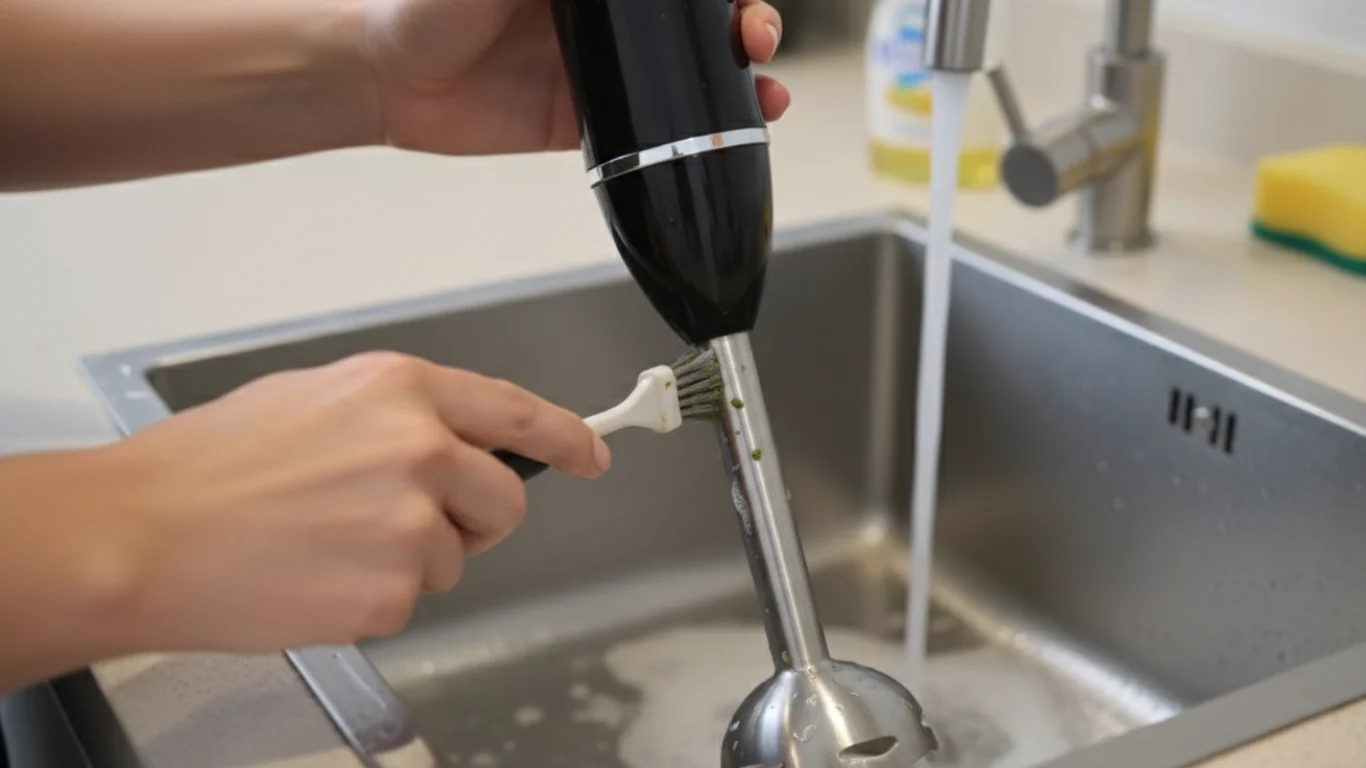
Inspect And Remove Residue
Cleaning an immersion blender starts with a careful inspection. Residue from food can stick to the blades and shaft. Removing this residue keeps the blender working well and safe to use. This step prevents buildup that can cause bad smells or damage.
Check the blender right after use. Look closely at the blade area and the shaft. Food bits often hide in small crevices. Spotting these early makes cleaning easier and faster.
Use A Soft Brush To Remove Food
A soft brush helps remove tough residue. Gently scrub around the blade and shaft edges. Avoid hard brushes to protect the blade’s sharpness. This step clears hard-to-reach spots and food particles.
Clean The Motor Housing With A Damp Cloth
Residue can also collect on the motor housing. Use a damp cloth to wipe it clean. Never submerge the motor part in water. Keep moisture away from the electrical parts to avoid damage.
Avoid Motor Contact With Water
Protecting the motor of your immersion blender is vital during cleaning. Water can damage the motor and cause it to stop working. Never immerse the motor part in water or let water drip into it. Use careful cleaning methods that avoid contact between water and the motor.
Following simple steps helps keep your blender safe and working well for a long time. Focus on cleaning only the detachable parts with water and wipe the motor clean with a cloth.
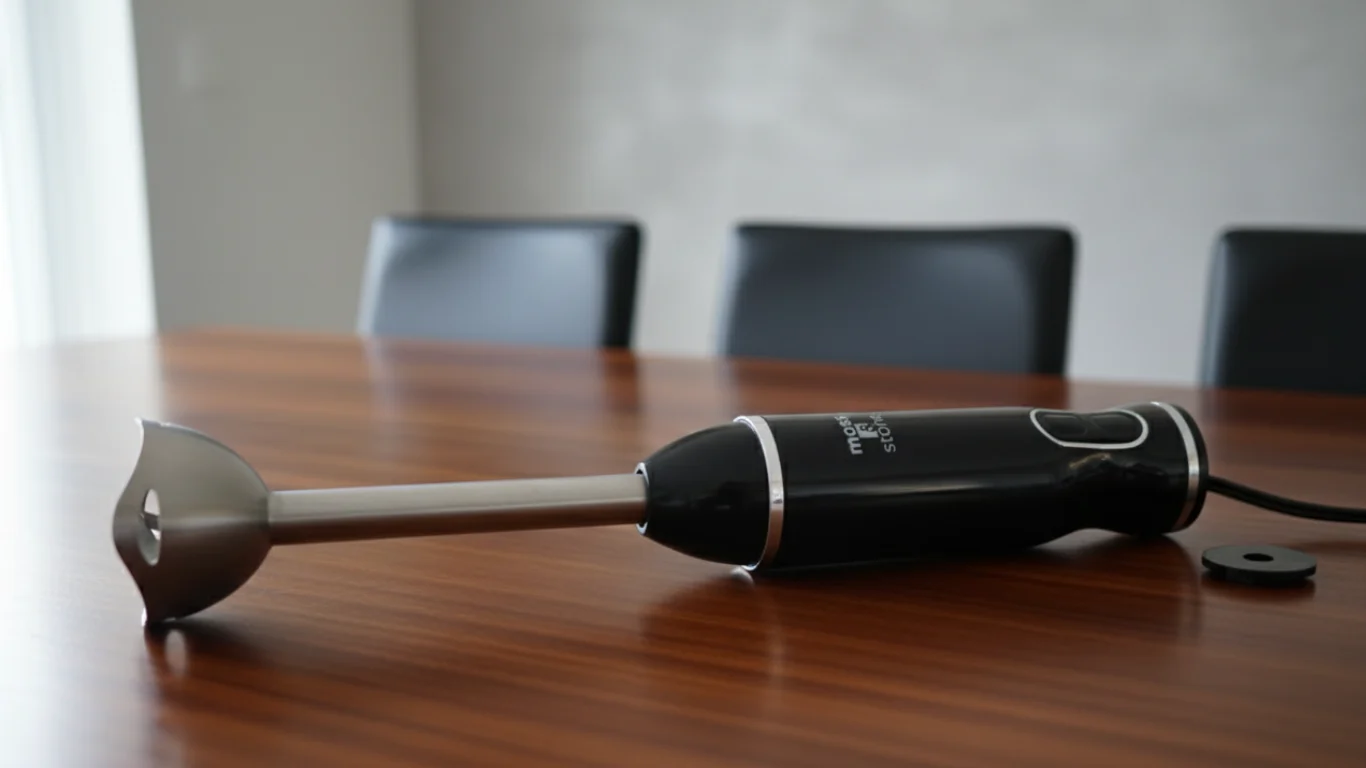
Step 6: Always Unplug Your Immersion Blender Before Cleaning
Unplugging your immersion blender before cleaning is very important. It keeps you safe from electric shock. The blender’s motor can still run if plugged in. This can cause injuries when you clean the blades or body.
Always remove the plug from the socket before starting to clean. This small step prevents accidents. It also protects the blender’s electrical parts from water damage.
Why Unplugging Is Crucial
Cleaning a blender while plugged in risks electric shock. Water and electricity do not mix well. The blender’s sharp blades can start unexpectedly. This can cause cuts or worse.
Unplugging ensures the blender is completely off. It stops any accidental starts during cleaning. This simple action saves you from harm.
Protecting The Motor And Cord
The motor and cord must stay dry. Water can cause short circuits or rust. Unplugging allows you to clean the body safely with a damp cloth. Avoid soaking the motor or cord under water.
Wipe the cord gently and check for damage. A dry motor and cord last longer and work better. Unplugging helps maintain your blender’s life.
Simple Steps to Safely Unplug Your Blender
First, switch off the blender if it has a power button. Hold the plug firmly and pull it out of the socket. Avoid pulling the cord to prevent damage. Keep your hands dry while unplugging.
Place the unplugged blender on a clean surface. Now, you can safely wash the detachable parts without worry.
Step 7: Clean Your Immersion Blender Right After Use
Cleaning your immersion blender immediately after use keeps it in good shape. Food particles dry quickly and get hard to remove. Quick cleaning stops food from sticking to the blades and shaft. It also prevents bacteria growth and bad smells.
Prepare A Cleaning Solution
Fill a tall glass or container with warm water. Add a drop or two of dish soap. Use just enough water to cover the blades when the blender is inside.
Blend The Soapy Water
Place the immersion blender into the soapy water. Turn it on and blend for 10 to 20 seconds. This helps remove food stuck on the blades and shaft.
Remove the blender from the soapy water. Rinse the blade and shaft under clean running water. Make sure all soap and food bits are washed away.
Wipe The Motor Housing
Unplug the blender before cleaning the motor part. Use a damp cloth to wipe the handle and cord. Avoid getting water inside the motor to prevent damage.
Dry Completely Before Storing
Allow the blender to air dry or wipe it with a dry cloth. Store it only when fully dry to avoid rust or mold buildup.
Final Thoughts: How to Clean an Immersion Blender
Cleaning your immersion blender keeps it safe and working well. Blend soapy water briefly to remove food bits. Rinse with clean water to wash away soap. Always unplug before wiping the motor and cord. Dry all parts carefully to prevent rust or damage.
Regular cleaning saves time and keeps flavors fresh. A clean blender makes cooking easier and more fun. Keep these simple steps in mind for best results. Your blender will last longer and stay ready to use.
Immersion Blender Cleaning FAQs (Answered by Experts)
What Is The Best Way To Clean An Immersion Blender?
Fill a container with warm, soapy water and blend for a few seconds to clean blades. Rinse with clean water. Unplug, then wipe the motor and cord with a damp cloth. Use a soft brush for stubborn residue. Dry all parts before storing.
Can You Put The Head Of An Immersion Blender In The Dishwasher?
Yes, most immersion blender heads are dishwasher safe. Check your manual to confirm before placing it in the dishwasher. Remove the head from the motor before washing. Hand wash the motor part only.
How To Clean And Sanitize A Blender?
Fill the blender with warm, soapy water and blend for 20 seconds. Rinse with clean water. Unplug and wipe the motor and cord with a damp cloth. Use a soft brush for stubborn residue. Dry all parts before storing. Avoid submerging the motor to prevent damage.
How Do I Safely Clean Immersion Blender Blades?
Fill a container with warm, soapy water and blend for a few seconds. Rinse well.

Hi, I’m Joshua Miller, a U.S.-based food lover, review writer, and Co-founder of KitchenWink.com. I hold a Bachelor of Science in Food Science and Culinary Technology, and for over five years I’ve been testing kitchen gadgets like air fryers, blenders, and other cooking tools.
I’m also a home cook, so every product I review is tried in real kitchens—not just in theory. My reviews are based on real results, simple fixes, and tips that anyone can use. With both formal training and hands-on testing, I make sure my advice is clear, honest, and practical.
My goal is simple: to help home cooks choose the right tools and make cooking easier every day.

